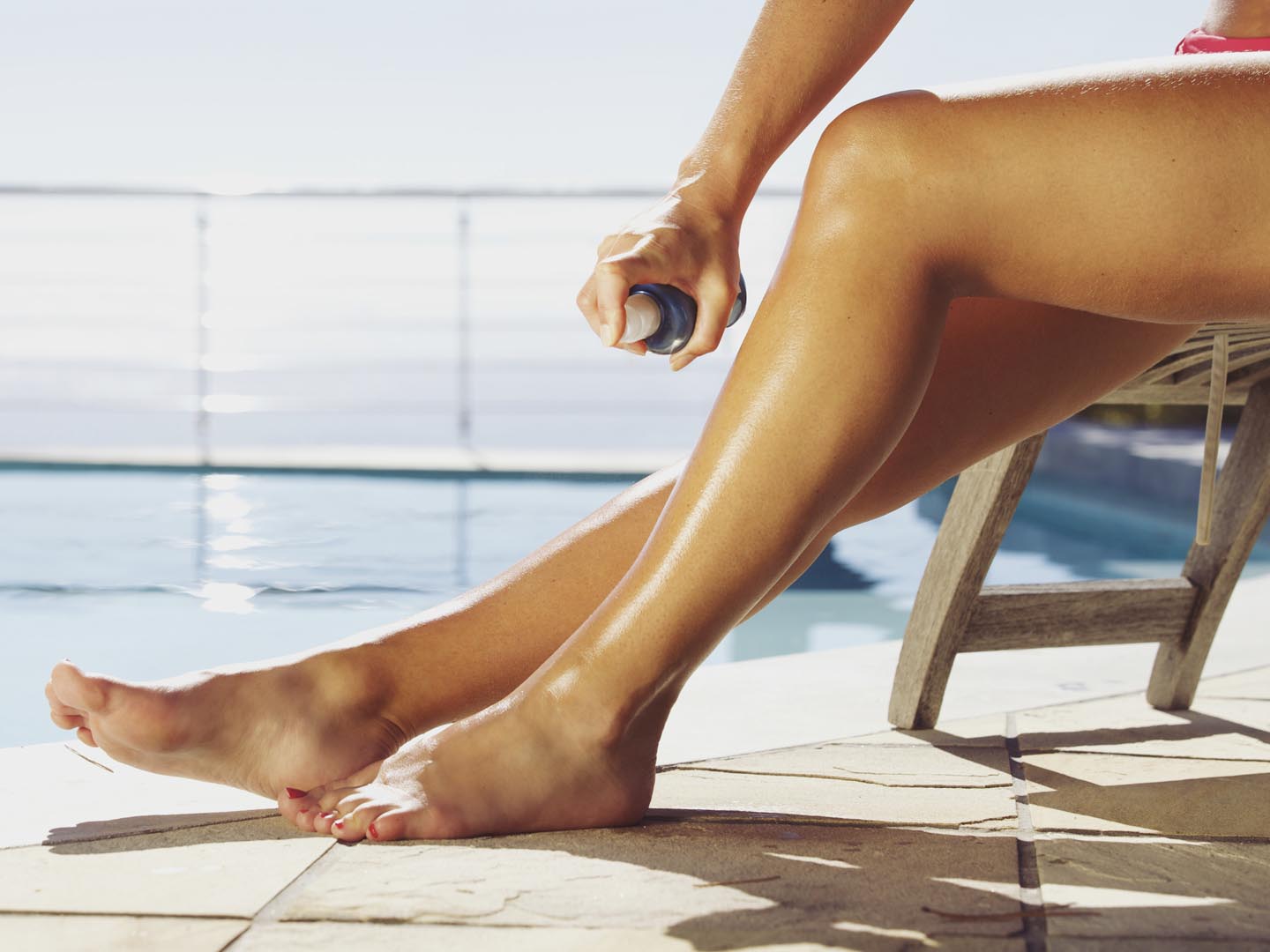Are Self-Tanners Dangerous?
What’s in those self-tanning products? Are they harmful to the skin or to general health?
Andrew Weil, M.D. | July 30, 2004

Self-tanners – the lotions, sprays and gels that you apply for a sunless tan – aren’t dangerous. They contain a harmless, colorless sugar called dihydroxyacetone that interacts with amino acids in dead cells on the surface of the skin to give you a temporary tan. The effect lasts for only a few days because the skin naturally sheds the dead cells that have been colored. Except for rare cases of irritation and allergic reaction, the products are safe.
Today’s self-tanners are far superior to those of the past, which imparted a streaky orange color. They now come in light, medium and dark tones. Some contain ingredients to moisturize dry skin. The trick to getting a natural-looking tan is to apply the products carefully and evenly. Be sure to wash your hands thoroughly afterward (or wear latex gloves when you do the application); otherwise you’ll have tan palms for a few days.
The downside of self-tanners is that you have to reapply them every few days if you want to keep your tan through the summer (more often if you want to deepen it). More importantly, bear in mind that self-tanners provide little or no protection against the sun’s damaging rays. You still need sunscreen. Some self-tanners now contain the equivalent of an SPF of 2 or 4, which offers minimal protection; the Skin Cancer Foundation recommends using a sunscreen with an SPF of 15 or higher. You need to reapply sunscreen after two hours in the sun or after swimming or toweling off perspiration.
For a temporary tan you also can get products called bronzers, which are akin to makeup and give you a brief illusion of a tan. While they’re as safe as any other type of makeup, they’ll wash off or wear off after a few hours. Some contain SPF 15.
Please avoid tanning accelerators, and lotions and pills containing (among other substances) the amino acid tyrosine. Supposedly, they accelerate tanning by stimulating and increasing pigment formation in the skin, but there’s no scientific evidence that they work. The FDA considers them unapproved drugs. Tanning pills are even worse – they contain the color additive canthaxanthin, which turns skin an orange to brownish color but can lead to formation of yellow deposits in the eye, a condition called “canthaxanthin retinopathy.” They have been associated with hives and hepatitis. And stay away from tanning salons. The UVA rays you would get are not, as advertised, safer than the sun’s UVB rays – they’re just as likely to cause sunburn, skin cancer and premature aging of the skin.
Andrew Weil, M.D.









